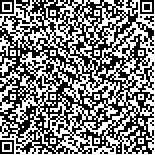王科英,恽晓萍.日常注意成套测验(汉化版)对脑损伤后注意障碍的诊断价值[J].中华物理医学与康复杂志,2020,42(8):690-693
扫码阅读全文

|
| 日常注意成套测验(汉化版)对脑损伤后注意障碍的诊断价值 |
|
| |
| DOI:10.3760/cma.j.issn.0254-1424.2020.08.004 |
| 中文关键词: 注意障碍 评定 获得性脑损伤 |
| 英文关键词: Attention deficit Assessment Brain injury Test of everyday attention |
| 基金项目:国家科技支撑计划项目(2008BAH26B04) |
|
| 摘要点击次数: 5753 |
| 全文下载次数: 6422 |
| 中文摘要: |
| 目的 探讨汉化版日常注意成套测验(TEA)对获得性脑损伤后注意障碍诊断价值,确定其各项分测验的最佳诊断界定值。 方法 选取正常成年人117例(正常对照组)和33例获得性脑损伤患者(脑损伤组),分别进行TEA(汉化版)测验,得出各分测验的原始分。采用受试者工作特征曲线(ROC)分析2组受试者TEA(汉化版)测验各项分测验的诊断界定值,并进行统计学分析。 结果 脑损伤组与正常对照组的TEA(汉化版)各项分测验结果比较,差异有统计学意义(P<0.01)。除电梯计数测验外,其余各分测验(地图搜索、分心时电梯计数、视觉电梯、电梯上下运行计数、电话簿搜索、计数时电话簿搜索、彩票任务)ROC曲线下面积(AUC)为0.795~0.955(P<0.01);敏感度为74.1%~97%,特异度为58.8%~94.1%,以最大约登指数对应的分值确定各分测验的最佳诊断界定值,分别为53.5(54)、7.5(8)、8.5(9)、4.39、5.5(6)、3.68、5.03、8.5(9)。 结论 TEA(汉化版)具有较高的临床应用价值,有助于区分和诊断不同类型的注意障碍。 |
| 英文摘要: |
| Objective To explore the value of the Chinese version of the test of everyday attention (TEA) for diagnosing attention deficit after brain injury, and to determine the best cut-off value for each subtest. Methods A total of 117 healthy adults and 33 brain-injured patients were evaluated using the TEA (Chinese version). The original scores of each sub-test were obtained and statistically compared between the control group and the brain injury group. Receiver operating characteristics (ROC) curves were used to determine the optimal cutoff values in each subtest for diagnosing attention deficits. Results Significant differences were found between the two groups. Except for the elevator counting test, the area under the ROC curves of all the other subtests (Map Search, Elevator Counting with Distraction, Visual Elevator, Elevator Counting with Reversal, Telephone Search, Telephone Search while Counting and lottery) were between 0.795 and 0.955. The average sensitivities were in the range 74.1-97.0% and the specificities were 58.8% to 94.1%. Maximum Youden indices were used to determine optimal diagnostic cut-off values for each subtest. Conclusions The TEA (Chinese version) has good clinical applicability. It can be used to diagnose and differentiate different types of attention deficits. |
|
查看全文
查看/发表评论 下载PDF阅读器 |
| 关闭 |